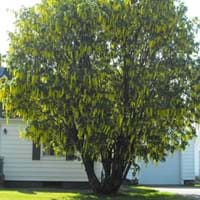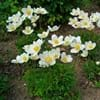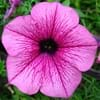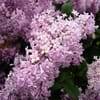Life Span
Perennial
Perennial
Type
Tender Perennial
Tree
Origin
Mediterranean
Brazil
Types
Blue Anemone, Greek Windflower, Carolina Anemone, Chinese Anemone
Not available
Number of Varieties
Not Available
Habitat
Wild
Shady Edge, Woodland Garden Dappled Shade
USDA Hardiness Zone
8-12
11-15
Sunset Zone
4, 5, 6, 7, 8, 9, 10, 11, 12, 13, 14, 15, 16, 17, 18, 19, 20, 21, 22, 23, 24
H1, H2, 23, 24
Habit
Clump-Forming
Upright/Erect
Minimum Height
Not Available
Minimum Width
Not Available
Flower Color
Sky Blue
Yellow, Lemon yellow
Flower Color Modifier
Not Available
Bicolor
Fruit Color
Not Available
Gray Green
Leaf Color in Spring
Green
Green
Leaf Color in Summer
Yellow, Green
Green
Leaf Color in Fall
Not Available
Green
Leaf Color in Winter
Not Available
Green
Leaf Shape
Compound
Compound
Plant Season
Spring
Spring, Summer, Fall
Sunlight
Partial Sun, Partial shade
Full Sun, Partial Sun, Partial shade
The pH of Soil
Acidic, Neutral
Acidic, Neutral
Soil Drainage
Average
Average
Bloom Time
Early Spring, Spring, Late Spring, Early Summer
Summer, Late Summer
Where to Plant?
Ground, Pot
Ground
How to Plant?
Seedlings
Budding, Grafting, root cutting, Seedlings
Plant Maintenance
Medium
Medium
Watering Requirements
Medium, Prefer drip-irrigation instead of Over-head watering, Use Mulches to help prevent water loss during hot and windy weather, Water Deeply
Average Water Needs, Do Not over Water, Keep the Soil well drained, Requires more often in extreme heat, Requires regular watering
In Summer
Lots of watering
Lots of watering
In Spring
Moderate
Moderate
In Winter
Average Water
Average Water
Soil pH
Acidic, Neutral
Acidic, Neutral
Soil Drainage Capacity
Average
Average
Sun Exposure
Partial Sun, Partial shade
Full Sun, Partial Sun, Partial shade
Pruning
Prune prior to new growth, Remove dead or diseased plant parts, Remove deadheads
Remove damaged leaves, Remove dead branches, Remove dead leaves
Fertilizers
All-Purpose Liquid Fertilizer
All-Purpose Liquid Fertilizer
Pests and Diseases
Botrytis collar rot, Crown gall, Cucumber mosaic, Downy mildew, Impatiens necrotic spot, Leaf curl, Phytophthora, Rhizoctonia crown rot, Root rot, Rust, Sclerotinia blight, Southern blight
Canker, Caterpillars, Root Pathogen
Plant Tolerance
Drought
Drought
Flower Petal Number
Single
Single
Foliage Texture
Fine
Coarse
Foliage Sheen
Matte
Glossy
Attracts
Not Available
Butterflies
Allergy
Skin irritation
allergic reaction, poisonous if ingested, Skin irritation
Aesthetic Uses
Not Used For Aesthetic Purpose
Formal Garden, Used in parkland
Beauty Benefits
Not Available
Not Available
Environmental Uses
Air purification
Air purification
Medicinal Uses
Asthma, Cough, Gout, Menstrual Disorders, Stomach pain
Vomiting
Part of Plant Used
Flowers, Leaves
Seeds
Other Uses
Not Available
Pesticide, Used as Ornamental plant, Wood is used for making furniture
Used As Indoor Plant
No
No
Used As Outdoor Plant
Yes
Yes
Garden Design
Bedding Plant, Container, Mixed Border, Rock Garden / Wall, Wildflower
Feature Plant, Shade Trees, Tropical
Botanical Name
ANEMONE 'Harmony Blue'( HARMONY SERIES)
LOPHANTHERA lactescens
Common Name
Anemone, Harmony Blue Anemone
Golden Chain Tree
In Hindi
रत्नज्योति
Laburnum
In German
Anemone
Goldregen (Pflanze)
In French
Anémone
Laburnum
In Spanish
Anémona
Laburnum
In Greek
ανεμώνη
Laburnum
In Portuguese
Relutantemente
Laburnum
In Polish
Zawilec
Złotokap
In Latin
VivoSocial
Laburnum
Phylum
Magnoliophyta
Tracheophyta
Class
Magnoliopsida
Magnoliopsida
Order
Ranunculales
Fabales
Family
Ranunculaceae
Fabaceae
Clade
Not Available
Angiosperms, Eudicots, Rosids
Tribe
Not Available
Not Available
Subfamily
Not Available
Faboideae
Season and Care of Anemone and Golden Chain Tree
Season and care of Anemone and Golden Chain Tree is important to know. While considering everything about Anemone and Golden Chain Tree Care, growing season is an essential factor. Anemone season is Spring and Golden Chain Tree season is Spring. The type of soil for Anemone is Loam and for Golden Chain Tree is Loam while the PH of soil for Anemone is Acidic, Neutral and for Golden Chain Tree is Acidic, Neutral.
Anemone and Golden Chain Tree Physical Information
Anemone and Golden Chain Tree physical information is very important for comparison. Anemone height is Not Available and width Not Available whereas Golden Chain Tree height is 1,520.00 cm and width 460.00 cm. The color specification of Anemone and Golden Chain Tree are as follows:
Anemone flower color: Sky Blue
Anemone leaf color: Green
Golden Chain Tree flower color: Yellow and Lemon yellow
- Golden Chain Tree leaf color: Green
Care of Anemone and Golden Chain Tree
Care of Anemone and Golden Chain Tree include pruning, fertilizers, watering etc. Anemone pruning is done Prune prior to new growth, Remove dead or diseased plant parts and Remove deadheads and Golden Chain Tree pruning is done Remove damaged leaves, Remove dead branches and Remove dead leaves. In summer Anemone needs Lots of watering and in winter, it needs Average Water. Whereas, in summer Golden Chain Tree needs Lots of watering and in winter, it needs Average Water.





